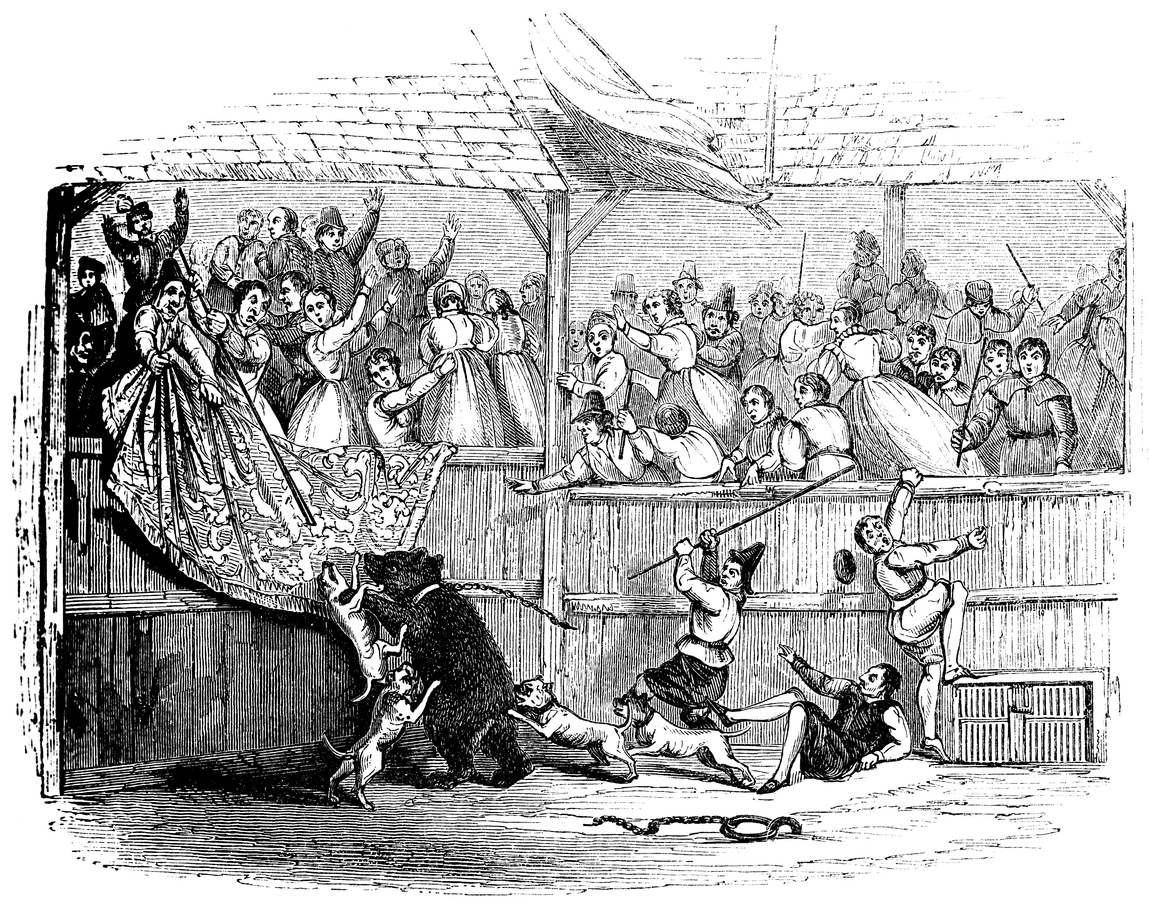
August 6, 2020, by Emma Rayner
Raising the curtain on Shakespeare’s box office bears…and other animals
‘Exit… pursued by a bear’ is probably the most famous stage direction of all time but how much do we know about those bears and other animals that were part of public entertainment in Shakespeare’s England?
Not a huge amount, according to researchers at the Universities of Nottingham, Roehampton and Oxford, who plan to rectify this thanks to a £978,319 grant from the Arts and Humanities Research Council (AHRC).
The team of archaeologists and theatre historians are embarking on a wide-ranging exploration of the Elizabethan and Jacobean public entertainment industry to challenge the perception that ‘combat’ shows like bear baiting were merely the ‘fringe’ to the main shows in early modern playhouses.
It is well known that Elizabethan and Jacobean audiences flocked to the theatre to see the plays of writers such as Shakespeare, but it is less well known that those same audiences were just as likely to attend animal baiting for entertainment. This involved pitting dogs against various kinds of animals, including bulls, bears and even lions. Many of the animals, particularly bears, became named celebrities in their own right with one, Sackerston, mentioned in Shakespeare’s The Merry Wives of Windsor, yet up to now very little has been known about them or the activity of baiting itself.
The research will involve several different strands of work over the next 3 years including:
• Detailed examination of historical records of animal baiting from London’s playhouse scene and, for the first time, an investigation about what was happening in the English regions at the time.
• Ancient DNA and isotope analysis of a variety of archaeological remains of bears, dogs, bulls and horses from London’s Elizabethan and Jacobean playhouse sites to establish the animals’ species, age, sex, diets, appearance and how they died.
• A series of performance-based workshops to examine how humans and animals were perceived within public performance, particularly in the context of combat as sport and entertainment.
Leading the Box Office Bears project, Dr Hannah O’Regan from the University of Nottingham’s Department of Classics and Archaeology, said: “I am excited to be embarking, with our project partners MOLA, on the first complete analysis of animal bones found at multiple sites on the south bank of the Thames at Southwark. Three animal baiting arenas have been excavated, along with the bones of the bears, bulls, dogs and horses that lived and died there.
“We want to paint a picture of the lives of the animals as actors within the performance of baiting by revealing their possible birthplace, their diets, their injuries and how they died. Through ancient DNA analyses we will determine their sex, whether brown, black or polar bears are present, and where they might have originated (by Shakespeare’s time bears had been extinct in Britain for at least 1000 years). For the dogs, we can also look in astonishing detail at their appearance, with new DNA techniques even allowing us to identify their coat colour. Together these methods will allow us to recreate the spectacle of baiting in unprecedented detail, but also bring the lives of the animals to the fore – placing them at the centre of our study and making them more than just the silent participants in an activity that we now find hard to imagine could ever have been entertainment.”
 Performance history expert Dr Andy Kesson from the University of Roehampton said: “Animal-baiting arenas appear to have been in operation some time before theatres opened in this country. This project will allow us to ask how these two entertainment forms began and worked alongside each other, and whether they shared business models and audiences. We will also be able to ask what people thought about as they watched animal-baiting: the large mastiff dogs involved were closely associated with Englishness and masculinity, so that nationhood and gender were at play during baiting. In this way, baiting was capable of telling its audiences lots of different stories at once, and our combined work on the DNA, archaeology and performance of baiting will allow us unprecedented access to those stories.”
Performance history expert Dr Andy Kesson from the University of Roehampton said: “Animal-baiting arenas appear to have been in operation some time before theatres opened in this country. This project will allow us to ask how these two entertainment forms began and worked alongside each other, and whether they shared business models and audiences. We will also be able to ask what people thought about as they watched animal-baiting: the large mastiff dogs involved were closely associated with Englishness and masculinity, so that nationhood and gender were at play during baiting. In this way, baiting was capable of telling its audiences lots of different stories at once, and our combined work on the DNA, archaeology and performance of baiting will allow us unprecedented access to those stories.”
A blog on the Box Office Bears project are available here and a video chat is below:
No comments yet, fill out a comment to be the first



Leave a Reply